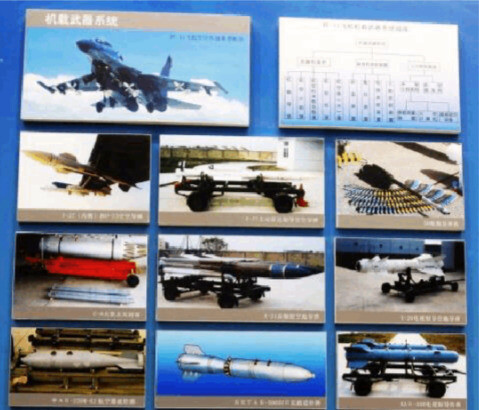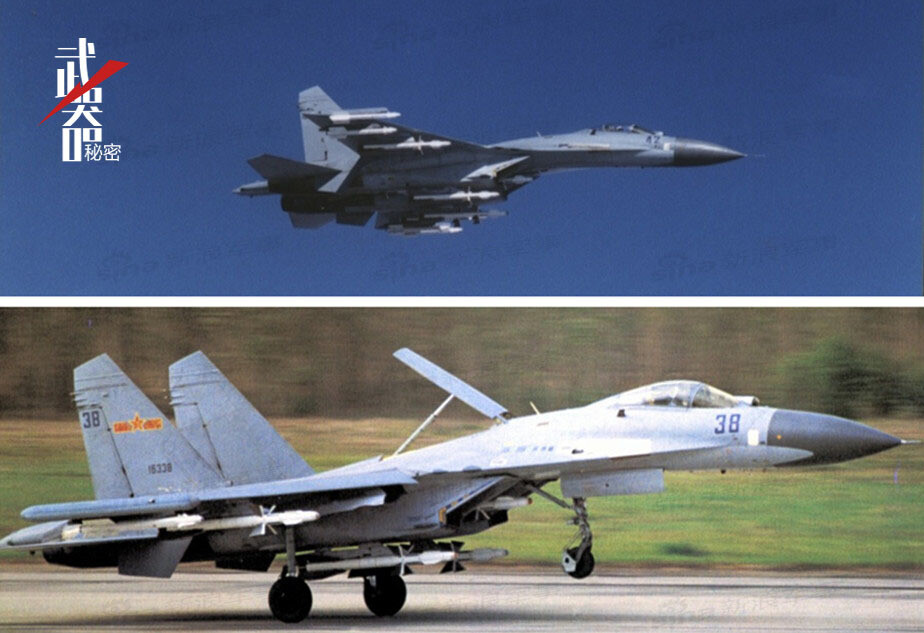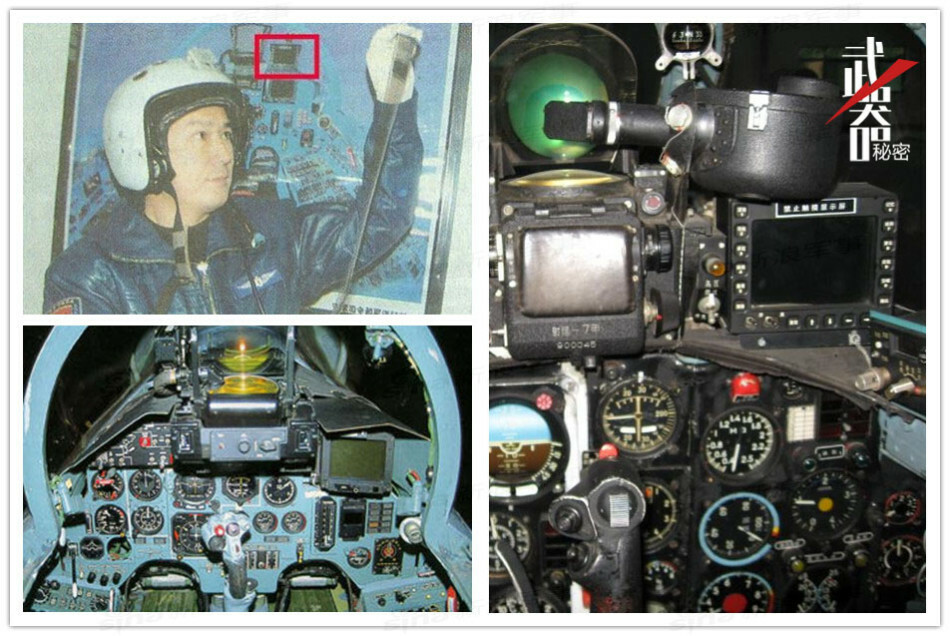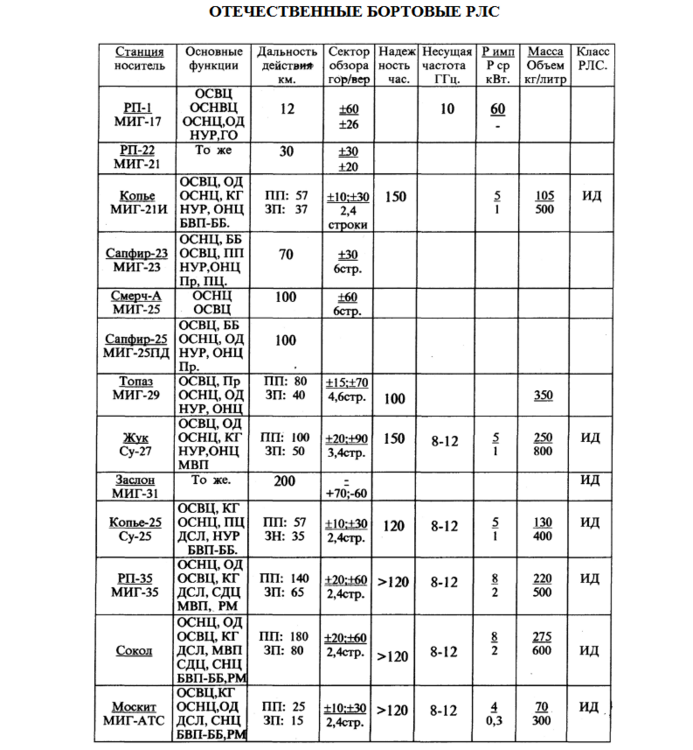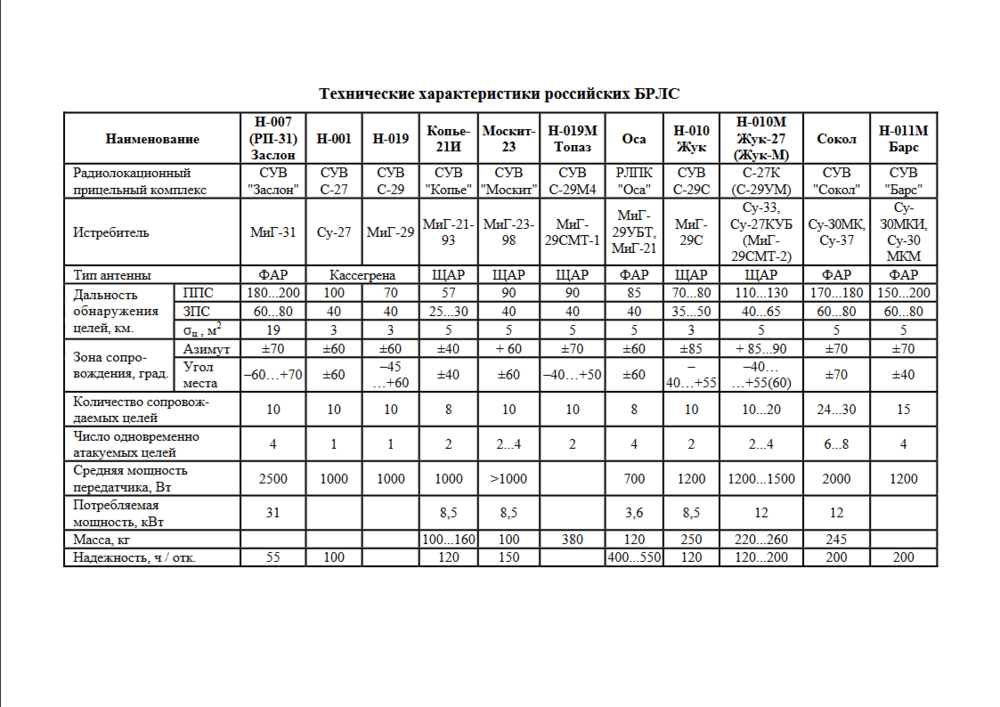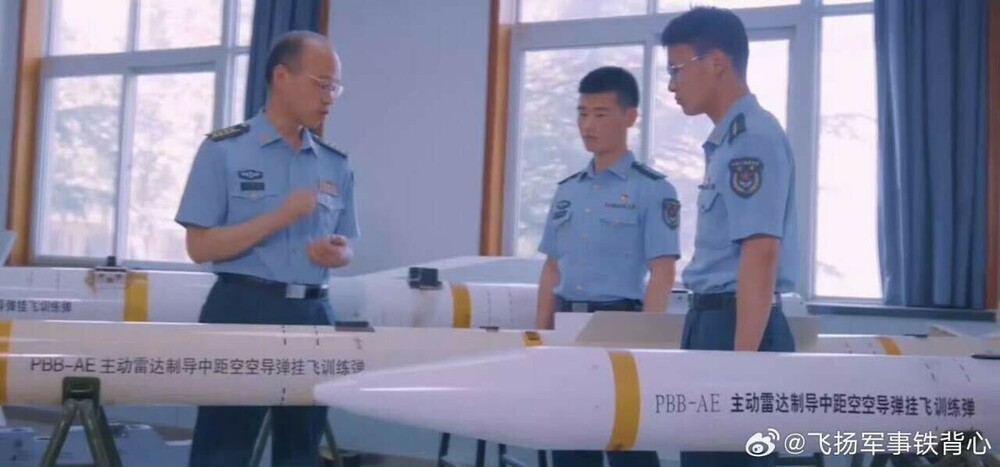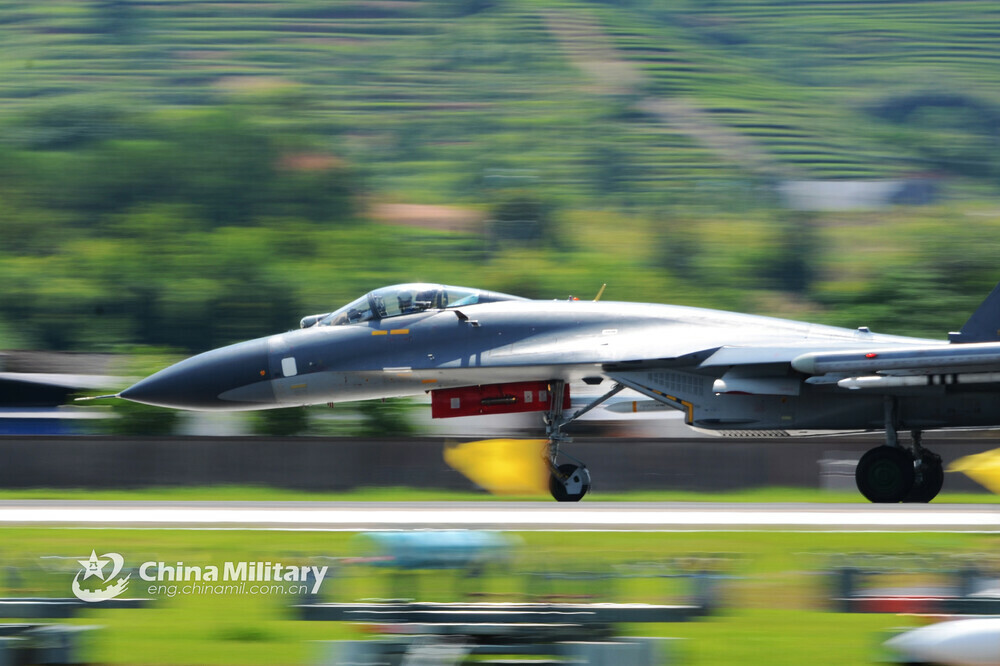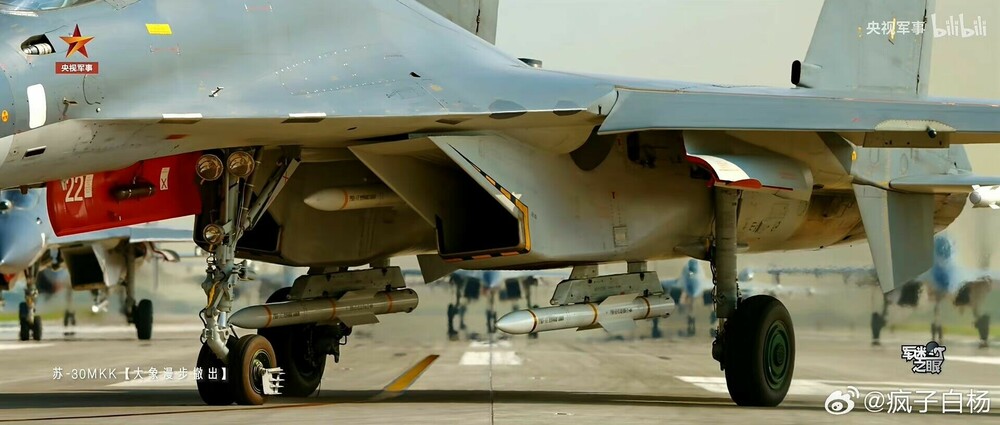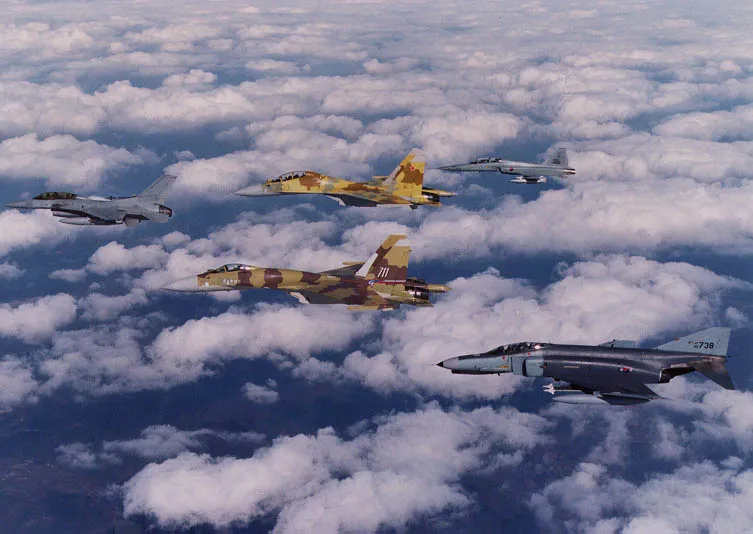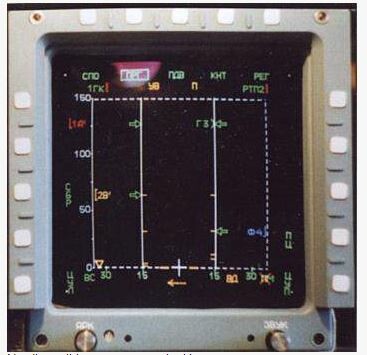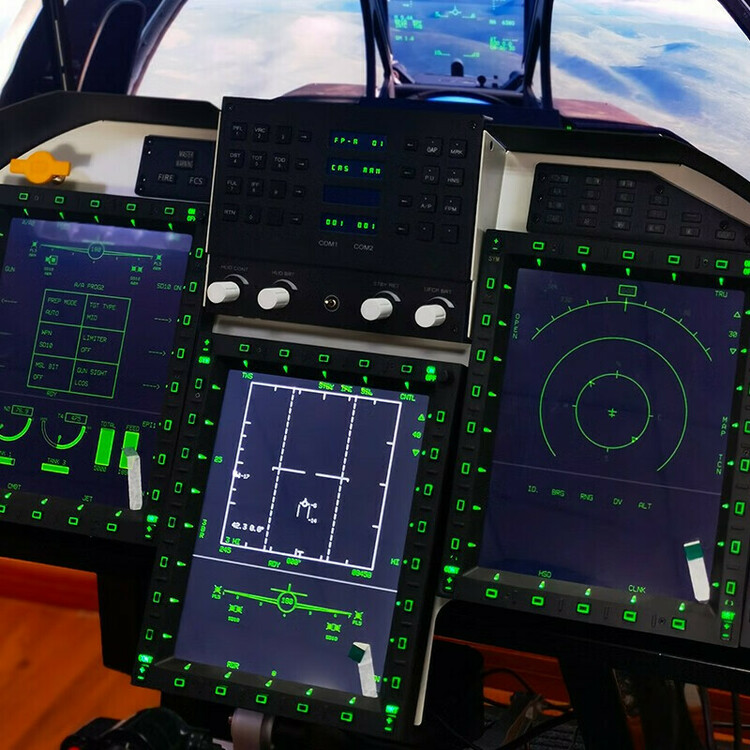-
Posts
185 -
Joined
-
Last visited
Content Type
Profiles
Forums
Events
Everything posted by Irisz
-
-
-
In my case, I'd rather uninstall DCS World because ED doesn't care about the preferences of REDfor fans. Even if I don't buy a module, they constantly reduce the storage space on my SSD! I would like to point out that there are users who are not fans of NATO modules. I recently saw the F4 skins in the news and the different paint schemes that will be available for it. I was just annoyed that my SSD storage is being taken up again because a new flyable plane is coming to DCS World! I really want to emphasize that my problem is not with the appearance of new products, but with how they affect my storage space without my consent! Why is it so difficult to create separate directories for installed and non-installed versions of DCS World? Can someone explain to me why my SSD is affected by a module I didn't purchase? Why can't a low-resolution 100-200 MB skin be used for the F4 Phantom AI and leave those who didn't buy the module alone? There are games that offer HD and SD versions, but the SD versions do not contain 4K resolution textures! I also use the SD version for this game because it's more suitable for me. I don't have a 4K monitor, so why should I need 4K textures? Yesterday, I read that another game offers its users four types of installable versions! How wonderful is it that they cater to their community like that? What does DCS World have? I could use an insulting epithet here, but currently, it seems that only those who buy all the modules are valued! So if I didn't buy the product, don't take up 12 GB of my space. I don't even play in a 3rd generation fighter environment. The F4 Phantom is humiliated by the Su-27 10 times out of 10 in BVR air combat! I never look for such aerial targets under any circumstances. The F-16CM is the best and heaviest training aircraft for Su-27 and J-11A air combat practice! The other game that I still like is successful because it can be played on a toaster and is played by millions, which attracts more people to the game because of this, it is surrounded by the same passion as DCS World. I have been a Flanker addict since 2009! DCS World is the best simulator! The J-11A is currently a fantasy and I'm just waiting for them to fix it because in reality it can do much more! This game has also become entertainment for whales, and they want to force everyone to spend their money on ED and their computer. I buy parts for my computer when it breaks, not when DCS World releases new modules to ED make money. If there is a Module Manager, why is there no Skin Manager? I will reiterate: Those who do not buy the product should not receive these high-resolution skins! What would make me happiest is if, when I install DCS World, all AI skins are in low resolution! If you don't like the look of DCS World, let the Skin Manager give you the option to choose! It would fit perfectly in the Module Manager. You can install many things for DCS World, so why can't you have a Skin Pack option? DCS World LOW Skin Pack - DCS World SD Skin Pack - DCS World HD Skin Pack! LOW Pack = Low texture pack, SD Pack = Medium Pack, HD Pack = 4K or 8K texture pack! Basically, I would choose the Low Skin Pack because I come here to fly, not to look at airplanes. DCS World is a simulator, not a Airshow simulator where I go out to the static line and inspect the rivets on the plane! I respectfully note that I do not want to offend anyone! Everyone should have the right option to install what they want on their computer! If possible, make a 16K Skin Pack for those who buy 8 Terabyte SSDs and want to utilize the RTX 4090. I don't even dare to think about the RTX 5090, because this also allows a more powerful and better PC to run DCS World! By the way, I had to buy 64GB of RAM for the PC just because of DCS World...
-
Thank you for your precious time and help sir!
-
I don't understand why a developer can't implement the OP's request! Do the developers of DCS World simply not understand that DCS World will have fewer players this way? They are simply burying their heads in the sand. If you don't have enough storage space, they just tell you to buy another SSD. Do they not understand that this is the best solution that the OP is asking for? There is already another topic for this, which shows that with 8-bit textures, the memory requirements of DCS World could be reduced, making it playable for even more people. I didn't install the latest patch either, I didn't buy F4, yet I have to waste 12 GB of my SSD because some artist has a passion for painting. This has been requested on the forum for years. Writing a simple script code should be done, but unfortunately, it is not a priority because it does not bring money to ED. This request should be a higher priority because it would improve the confidence of the player base towards ED. There is no need to build a nuclear reactor with a huge SSD area! I could write a stronger criticism, but I gently note that not everyone comes to DCS World for the oversized textures and photorealistic graphics. People come to fly, and not everyone is able to spend thousands of dollars on computer parts. Due to the negligence of the developers, others constantly have to upgrade their SSD because the 3rd party developers like to paint. By default, there should be one skin for an airplane, and those who want more can download the high-resolution skins in the module manager. This also benefits ED by reducing the load on their servers. The loading time of the game is reduced, and you can enter the servers sooner because you don't have to load 20 GB into the memory. Currently, DCS World's memory requirements are so high because it uses huge textures! There are games that are successful precisely because they don't need a nuclear power plant to run. They work well even on weaker computers with little storage space, which is why many more people play them! Developers should keep this in mind!
-
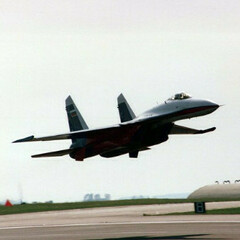
MiG-29A FF: capabilities and how will it fit into the (meta)game?
Irisz replied to PawlaczGMD's topic in DCS: MiG-29A Fulcrum
There are many details that make the MiG-29S not a MiG-29S in DCS World, and the ED is not interested in it, or deliberately does not correct it because it violates the law. In DCS World, the current MiG-29S is more like a MiG-29SE (export) because its radar is not stronger than the MiG-29A, it's just that the radar can do more! The documents are there for you to look at. Since the FC3 old product does not generate direct money from this, it does not care! I risk that it won't be fixed when FC2024 is released, because all FC3 settings guarantee that NATO modules will sell better! And if the $80 MiG-29 9-12 Export comes, they will make it so attractive that you will have to spend $80 because the FC2024 will not be attractive in comparison! -
He has not been interested in ED for 4 years, buy a bigger SSD. Meanwhile, they don't understand why DCS World is not so popular and why you have to aggressively push the marketing to buy something in the ED shop. I can't find what you are talking about! Edit: I found it in the meantime! Unfortunately, the topic is dead!
-

MiG-29A FF: capabilities and how will it fit into the (meta)game?
Irisz replied to PawlaczGMD's topic in DCS: MiG-29A Fulcrum
MiG-29A and MiG-29S do not have G limiter! Fred "Spanky" Clifton flew the Mig-29. He says there was no G-Limiter. ‘I could pull the black out of the stick and bend the airplane’ - around 28:10 in the video. ED Forum LINK -
Specifically, on the basis that the front-end components of the radar remained unchanged, a fire control computer with stronger processing capabilities was replaced at the back-end, and an information processing channel was added. This channel handles the radar's added TWS capabilities and the ability to use the R-77 active radar guided air-to-air missiles. The improved J-11 can use two R-77s to hit two targets at the same time. Since the Air Force does not require the J-11 fleet to have precise ground strike capabilities, the improved N001E radar is in a sense equivalent to the N001VE that lacks a ground working mode, which is the radar used by the Su-30MKK. Yes, in reality the J-11A can fly with 6 R-27ETs! The J-11A lua file contains this, it's just disabled, someone won't let you use it! You can check this! The R-27 series semi-active radar-guided air-to-air missiles are the main combat weapons of the Su-27 beyond visual range air combat. Among them, the R-27ET extended-range infrared terminal guidance model is quite distinctive because it does not actively send out signals at the end of the attack, but the original Su-27 The -27 can only mount a pair of R-27ETs under the wings, not under the fuselage. After the research of our army's scientific and technological personnel, the Su-27 fire control software was cracked and the R-27 series missiles can be mixed at will. At present, the vast majority of the Air Force's Su-27/J-11 have been upgraded and initially possess the capability of beyond-visual-range air combat under modern warfare conditions. From batch 00 to batch 04, a total of 105 J-11s were assembled in 5 assembly batches, continuously increasing the localization rate. While enriching the front-line strength of the Air Force, it also exercised Shenfei's production and manufacturing capabilities. Since the CRT display in the Su-27/J-11 cockpit has a relatively single purpose, especially it does not have the ability to display electronic maps, this greatly limits the mission range of this long-range aircraft. When a mission requires it, early batches of J-11s will have a domestic GPS electronic map display set up above the CRT display. This display can also be seen on later models of the domestic J-7 and J-8 series.However, since the J-11 only has one MFD, it often still needs a display dedicated to displaying electronic maps so that the MFD can provide other information to the pilot. Therefore, until now, this feature of self-reliance is still the distinguishing feature between China's Su-27 series fighters and Important differences between the Su-27s of other countries’ air forces.
-

MiG-29A FF: capabilities and how will it fit into the (meta)game?
Irisz replied to PawlaczGMD's topic in DCS: MiG-29A Fulcrum
Two interesting descriptions of the MiG-29's radars! The range of the MiG-29S radar could be corrected based on this in the DCS World because it underperforms! Mikoyan-Gurevich MiG-29A izdeliye 9-12 - The Red Eagle is Born The first ever production variant of the MiG-29 is the MiG-29A izdeliye 9-12, also known as “izdeliye 5” to confuse Western intelligence. Official production of this variant commenced in 1982, however the first batches were rolled out in 1979 and 1980. On the basis of this variant became the entirety of the legendary Fulcrum series and the main export variants that were delivered to some nations of the Warsaw Pact and less trusted allies such as Iraq. This is the baseline feature, in a way not the Fulcrum they were fully expecting. While it did receive the intended RPLK-29 system (built around the N019 Rubin radar), plans were already drawn for a much better version with the in-house designation of izdeliye 9-13S that was being tested less than a year later in 1983, which later became the izdeliye 9-13S (the MiG-29S). Despite this, the MiG-29A was still a production variant that served the Soviet Air Force. On the 11th of June, 1987, an order was issued to officially induct the MiG-29 into service, though it had achieved operational capabilities in 1983. Most of the batches were split into 15 examples, though it was 30 sometimes. The first 70 examples had small ventral fins outboard of the engine nacelles to improve the spinning characteristics of the engines. The batches that were rolled out in 1984 had the automatic bank corrector which rendered those small ventral fins unnecessary. The MiG-29A was powered by two Tumansky RD-33 engines with 5,040 kgf of thrust on regular power and 8,340 kgf on afterburner, each. The climb rate of the MiG-29A was an impressive 330 meters per second, and it could go up to 1,480 km/h at low altitude. Technically 1,500 km/h, but that’s when flying in it became really really dangerous. Its top speed was 2,450 km/h at 11,000 m, and the service ceiling was 17,000 m. One of the features that definitively decided the MiG-29A’s title as a fourth generation fighter is its WCS & FCS. Its targeting system was the RPLK-29, built around the Phazotron N019 Rubin radar that was decidedly superior to contemporary western systems of that time. The maximum detection range of a fighter in open air space was proven to be 75 km, while the AN/APG-66 of the F-16A fell short by 35 km, measuring at 40 km max. In look-down/shoot-down modes, the maximum detection range was 65 km in head-on situations and 35 km when in pursuit. It was a very capable radar with impressive look-down/shoot-down capabilities. The scan limit in azimuth was ±67º and +60º plus -38º in elevation. The maximum range it attempts to search at is 150 km (not the range it detects targets at; for example the MiG-23MLD’s radar goes as far as to 90 km to search but doesn’t find targets past 70 - 80 km). There were six modes: High PRF: this is the main search mode, which gives a detection range of fighter-sized targets between 50 and 75 km (can reach 100 km in open air space), and tracking range between 40 and 60 km at high altitude, however below 3 km of altitude it falls shorter by 10 km in both detection and tracking. It has a 130º scan area which is divided into left, center and right sectors; the left sector scans between -65º to -15º, center covers -25º to +25º and right sector from +15º to +65º. Medium PRF: a mode used in pursuit engagements only when necessary since it’s prone to ground clutter and displaying false targets, at which point the pilot has to visibly identify them. It detects and tracks targets between 20 and 35 km above 3 km of altitude, and below that, the detection range is 20 - 35 km and tracking is 18 - 35 km. At extremely low altitudes (500 m) the range is 15 - 30 km of detection/search and 13 - 25 km of tracking. Scan coverage in azimuth 40º and 16.5º in elevation. If the range of a detected aircraft is above 20 km, scan coverage becomes 30º in azimuth and 13.5º in elevation. SP Free Search: this is a mode that substitutes the “High PRF” mode when in dense ECM environments as it has ECCM capabilities. BLBOY / Tracking Mode: much like the western aircraft, the Soviets employed a dedicated “ACM” mode to acquire and track targets. “BLBOY” is short for “Bleyzhni Boy” which means “Close Combat”, and it has a target acquisition and tracking range of 250 m - 10 km achievable through a fixed targeting ahead vertical scan of + 37º/ -13º Track-While-Flyby (TWF): used in conjunction with High PRF, this is the mode that allows the tracking of 10 targets simultaneously (albeit still cannot engage more than one target at once). It also allows the missiles to be launched at their best possible ranges while minmizing warning. AVT: the last but not least is AVT or the automatic mode, which combines both High and Medium PRF to achieve optimal performance and displays a range of 100 km on the HUD. However, TWF is not available when using this one. When attacking with the cannon, here is a brochure from MiG detailing the gunnery modes 10 available. The optoelectronic sighting and navigation system, designated OEPrNK-29, includes the optical-electronic sighting system designated as the “OEPS-29”, which basically includes the aircraft’s IRST by the designation of “KOLS”, with up to 15 km of detection range against aerial targets, while the range of the laser rangefinder included in the system had a range measured at 6 km (Azimuth 30 ‘/ - 30’ or 15 ‘/ - 15’ elevation 15 ‘/ - 15’). It was also capable of slaving heat-seekers, feeding its missiles the coordinates of the bogies to allow them to track better initially while also passively attacking the enemy. Moreover, this sighting and navigation system also has the: SN-29 navigation system Schchel-U3M helmet mounted sight (HMS) SUO-29M weapons selector SEI-31 joint indication system (JIS) ILS-31 heads-up-display (HUD) FKP-EU gun camera Along with all these avionic systems, the impressive Schchel-3UM helmet-mounted sight was inducted. This helmet could slave heat-seeking missiles (mainly the R-73) just by aiming the pilot’s head / helmet at the target, and at this point every Soviet fighter had the tail protection system, a system with the purpose of defending the aircraft’s rear. It allowed the R-73 to be launched from the rear, giving it a full 360 degree FOV! It also came equipped with the SPO-15LM Beryoza RWR. However, it lacked a comprehensive ECM suite. It was supposed to come equipped with the Gardeniya-F1U jammer, and this was later remedied on later production models. Other avionics include the SRZP-1 IFF interrogator and the SRO-1P transponder. Coupled with the radar were of course the R-27 air-to-air missiles for beyond-visual range combat, which came in two versions: the R-27T infrared-homing model and the R-27R semi-active radar-homing model. These were efficient, long-ranged missiles with 50 km and 60 km of range in head-on mode respectively. In pursuit, the R-27T’s maximum range was measured at 20 km, while the R-27R capped at 27 km. Moreover, it had a maneuverability of 24G. Though similar to the R-24 in such terms, it had a lower launch range of 300 m instead of 500 m, making it a true dogfight missile. Furthermore, much like its predecessor (the R-24R), it had an inverse monopulse seeker. The MiG-29A’s usual air-to-air loadouts were four R-73A and two R-27R/T missiles, or two R-60M, two R-73A and two R-27R/T. The R-73A was an extremely agile dogfight missile, capable of attacking targets pulling up to 12G! This is thanks to the thrust-vectoring system. The seeker was also capable of detecting targets at approximately 20 km and could track at a whopping 60°/s. The maneuverability of the R-73A was measured at 45G, and it did not have a launch limit. On the newer models such as the R-73M found on the MiG-29S (+), the maneuverability was improved to 50-60G thanks to improvements to the aerodynamics of the missile. However, unlike the later models, it did not come with the R-77 active radar-homing missile to pit it up against fighters armed with the AIM-120A/C, neither the extended range R-27ER and R-27ET missiles. One should also not forget that despite the MiG-29 initially being intended for air superiority only (they underestimated the need for a secondary CAS role, improved on later models), it was still capable of attacking ground targets. Such loadouts included up to four 500 kg FAB-500M54 or FAB-500M62 bombs, or four 500 kg ZB-500 napalm bombs, up to six FAB-250 or sixteen OFAB-100 or 120 kg OFAB-120s. As for unguided rockets, up to four S-24 240mm heavy unguided rockets could be carried or four UB-32A-73 rocketpods totalling 128 rockets or 80 S-8 rockets in B-8M1 rocketpods. The manufacturer set an AoA limit of 26° on the aircraft, however in the VVS the imposed limit was 24° to ensure pilot safety. Its maneuverability at an altitude of 3,000 m with 50% fuel was 23.5 deg/° and this was achieved with the help of the leading edge flaps. For reference, the F/A-18C and Mirage 2000-5 maneuver at 20 deg/°, and the F-16C at 21.5 deg/°. The maximum airframe G limit was 9G, but the max G force in a turn was 7G. Comparatively, the F-16C, F/A-18C and EF2000’s maximum G force in turns were 6.2G, 6.4G and 7G respectively. Thanks to the Tumansky RD-33 engines with 5,040 kgf and 8,300 kgf (without and with afterburners), its maximum rate of climb was an impressive 330 m/s, better than all four previously mentioned western fighters. It took the MiG-29 around 13.5 seconds to reach 1,000 km/h from 600 km/h. Its top speed was 2,450 km/h at 11,000 m and 1,480 km/h at sea level. As a fourth generation fighter, it was of course armed with countermeasures. The MiG-29A was armed with 2 x BVP-30-26M chaff/flare dispensers with 30 x 26mm PPI-26 flare cartridges each, fired by the SUVP-29 unit. These dispensers were located in a shallow strake-like fairings ahead of the fins. They were tested on the “917” prototype. It was powered by two, two-shaft turbofan Tumansky RD-33 afterburning engines, each producing thrust rated at 5,040 kgf on regular power, 5,600 kgf on minimum afterburner and 8,300 kgf on full. All MiG-29s except the MiG-29M and MiG-29K (see below) used this one. With the aerodynamic design of the aircraft, it helped it achieve a maximum speed of 1,480 km/h at sea level (though technically it’s 1,500 km/h, but that speed was very risky for the aircraft) and 2,450 km/h at high altitude. Its maximum achievable Mach speed was/is Mach 2.35. This speed data more or less applies to all variants of the MiG-29. Up to 779 were produced (9-12, 9-12A and 9-12B combined). However, this variant was very quickly succeeded by the MiG-29S by converting many MiG-29As to the “S” standard, rendering it irrelevant from the service standpoint. It mainly served as the basis for exporting the Fulcrum. A two-seater version based on this one for training was designated the MiG-29UB. Equivalent: F-14A/B, F-15A, F-16A, F/A-18A/C, Mirage 2000C Pros: Very fast, accelerates from 600 - 1000 km/h in 13.5 seconds High top speed at sea level; 1,480 km/h, and 2,450 km/h at 11,000 m High 9G limit Very good roll rate Has countermeasures; 2 x BVP-30-26M chaff/flare dispensers with 30 x 26mm PPI-26 flare cartridges each Impressive climb rate measured at 330 m/s Has Schchel-U3M HMS (Helmet Mounted Sight) Very maneuverable; sharper at dogfights than even the Mirage 2000 and has a high AoA limit of 26 degrees Comes equipped with the modern OEPS-29 IRST with 15 km of tracking range Has the extremely deadly R-73A (R-73 RMD-1) dogfight thrust-vectoring air-to-air missile, with 40-50G of maneuverability and 60 deg/s of tracking Has R-27 heat-seeking and SARH BVR missiles (ranges of 50 and 60 km in head-on, 20 and 27 km in pursuit respectively), which are also maneuverable and track as soon as launched Powerful Phazatron N019 Rubin radar, beating the one of the F-16 and on par with the F-15’s Powerful 30mm cannon with high 1,600 RPM Comes with leading edge flaps Has the SPO-15LM Beryoza RWR Cons: Low amount of countermeasures in comparison with other aircraft of its time Limited CAS capabilities Lacks the R-77 and active radar-homing / FOX-3 missiles in general Does not have the extended-range R-27ER and R-27ET missiles Does not have the newer R-73M with solidified 50G maneuverability, higher gimbal limit and built-in ECM resistance Only capable of loading six missiles, whereas most of its opponents have eight to ten Comparably low range High cannon RPM makes 150 rounds of ammo little (limited ammo) Unpleasant stall characteristics Lacks a comprehensive ECM suite Mikoyan-Gurevich MiG-29S izdeliye 9-13S - The Definitive Early Fulcrum The MiG-29S izdeliye 9-13S is the definitive MiG-29 of the first iteration. When the extended-range R-27 models and the R-77 entered service, the Soviets began integrating those missiles into their aircraft; two former izdeliye 9-13 examples (“05 Blue” in 1988 and “04 Blue in 1989”) were modified for further research in this area. With the new SUV-29S WCS comprising the RPLK-29M avionics suite built around the new Phazotron N019M Topaz radar instead of the N019 Rubin, the MiG-29 became capable of using the impressive R-77 dogfight active radar-homing missile, which outperforms the first models of the AIM-120 AMRAAM, as well as the R-27ET and R-27ER missiles which vastly improved on the range of the former models from 50 and 60 km to 84 and 93 km respectively (though in very specific and severe conditions such as extremely high altitudes and in head-on, the R-27ER could engage from 100 km). These missiles were capable of 25-30G and tracking right off the rail, with a launch limit of 8G. The new radar was also capable of engaging two targets simultaneously (however only while utilizing the R-77). With this, the MiG-29S became the first aircraft to destroy two targets at the same time, with two R-77 missiles. Moreover, the N019M Topaz has increased ECM resistance, all-new software, a more advanced built-in monitoring system, a new Ts.101M digital processor and a slightly increased maximum detection range to 80 km. The R-77 was also very potent; capable of 30G in mid-air and has no issue being fired upon a plane pulling 12G. This is the first true dogfight BVR air-to-air missile in the world. With the R-77, the designers estimated that its combat efficiency increased by 2.5 - 3 times. As it is also one of the newer models, it later received the upgraded R-73M dogfight IR missile, with an increased gimbal limit from 45 degrees to 60, a solid 50G maneuvering capability and a new seeker which improved its frontal lock-on range at low altitude from 10 - 12 km (as on the previous R-73A) to 20 km. Moreover, the automatic flight control system was modified in order to help the new variant reach 28 degrees of AoA instead of 26, the maximum MTOW was increased to 20,000 kg and the ordnance load was increased to 4,000 kg; permitting the plane to heavier bombs such as 4 x FAB-500M62 instead of just two. A new SUV-29S weapons control system was also installed, a new Ts101 digital processor and an upgraded OEPrnK-29-1 optoelectric navigation/targeting suite, which had a new combined control mode that helped it with gunnery against aerial targets. Despite being a big improvement, this very specific model was only produced in limited numbers (just 16 examples for the USSR alone). Instead, the original MiG-29A was retrofitted with the new changes. Equivalent: F-15C, F-16C, F/A-18C, Mirage 2000-5, JAS39 Gripen Pros: New dogfight active radar-homing R-77 missiles New higher range R-27ET and R-27ER BVR missiles New R-73M missiles with higher maneuverability, gimbal limit and an increased frontal lock-on range from 10 - 12 km to 20 km at low altitude Higher AoA limit (28°) than the previous models OEPS-29 IRST with a range of 15 km, capable of “slaving” heat-seekers and passively attack targets New powerful Phazotron N019M Topaz radar with higher ECM resistance and capable of tracking engaging two targets simultaneously Schchel-3UM helmet-mounted sight, capable of slaving heat-seekers just by aiming the helmet at the target Very good roll rate Hard-hitting 30mm cannon with high ROF Leading edge flaps Has countermeasures Has the SPO-15LM Beryoza RWR Increased ordnance load Full ECM suite Good fuel capacity Cons: Comparatively low countermeasures capabilities; up to 60 cartridges Despite the increase in air-to-ground capabilities, it’s still limited Six pylons / missiles max; most western fighters of its time could carry at least eight Underwhelming effective range although increased Unpleasant stall characteristics, although the AoA was improved Fast-firing cannon with relatively limited ammunition (150 rounds) Mikoyan-Gurevich MiG-29A izdeliye 9-12A - Entrusting Close Allies Of course, the USSR had to provide its satellite states with self-protection. A slightly downgraded version of the MiG-29A emerged, known as the “version A” (or MiG-29A izdeliye 9-12A) with an RPLK-29E (“e” for eksportni, export) based on the N019EA Rubin radar designed for Warsaw Pact nations lacking the “Free Search” mode which limits its ECCM capabilities. It was also modified with the OEPrNK-29E optoelectronic and navigation system and older IFF transponders. Much like the Soviet model, it came equipped with a helmet mounted sight; the Schchel-U3M was designated “Schchel-U3M-1” for export. This model carries the export variants of the missiles carried by the Soviet version: the R-60MK, R-73MK, R-27R1 and R-27T1. However, it should be noted that Germany did not receive the infrared-homing version. Other than that, nothing else happened. Performance was identical to the Soviet version. It stayed in production from 1988 till 1991 and was supplied to East Germany, Czechoslovakia, Poland and Romania. Interestingly, Poland loaned two examples to Israel. They retained their original color scheme but had altered roundels. They were used for testing and evaluation against Israeli F-16As over the Negev desert. Equivalent: F-14A/B, F-15A, F-16A, F/A-18A/C, Mirage 2000C Pros: Identical performance to the Soviet model Best short-range heat-seeking missiles of its time; the R-73A had an agility of 40 - 50G, 60°/s, a launch limit of 8G and capable of attacking targets pulling up to 12G Passive BVR missiles (R-27T1) Very good BVR missiles; retained the R-27R (R-27R1) Retained the R-60M and R-73A heat-seekers (R-60MK and R-73MK in export designation) High AoA limit (26°) OEPS-29 IRST with a range of 15 km, capable of “slaving” heat-seekers and passively attack targets Powerful N019EA Rubin radar Schchel-3UM helmet-mounted sight, capable of slaving heat-seekers just by aiming the helmet at the target Very good roll rate Hard-hitting 30mm cannon with high ROF (1,500 - 1,800 RPM) Leading edge flaps Has countermeasures Has the SPO-15LM Beryoza RWR Cons: Comparatively low countermeasures capabilities; up to 60 cartridges Limited CAS / Ground-strike capabilities Six pylons / missiles max; most western fighters of its time could carry at least eight Missing R-77 active radar-homing BVR missiles The extended range R-27ER1 and R-27ET1 missiles were not included Low effective range (700 km at low altitude) Unpleasant stall characteristics Fast-firing cannon with relatively limited ammunition (150 rounds) Slightly downgraded avionics Lacks a comprehensive ECM suite -
Unfortunately, the PL-12 missile cannot be mounted on the J-11A! I will show you the truth, many interpreted it as PL-12, but unfortunately the truth is different! In this picture, training missile of R-27ER.: http://eng.chinamil.com.cn/MEDIA/PhotosChina/_attachment/2018/07/16/8090660_164a1d323db80906600491.jpg You can see the head of the RVV-AE is a different design than the R-27ER. You can compare them in the pictures!
-
To the topic R-77-1! The designer of PL12/SD10, Liang Xiaogeng, mentioned in an interview that the maximum shoot range of SD10 and AIM120 are measured at 10km altitude and 1.2 Mach speed for both carrier and target while the claimed 100km range for R77 is measured at 20km altitude and 1.5Mach. If using the same test standard, the range of R77 would be =<70km, on par with or even worse than SD10/PL12. In this regard, even the claimed 110km range of R77-1 is probably exaggerated as well. And also note that even the export version of PL15, namely PL15E, is labled with a max. range of 145km by AVIC. So yeah if someone still insists on this two having similar performance … Well, good luck. The developer of the PL-12 allegedly said this, but it is not true. We can prove the AIM-120 does 74km from subsonic launch (0.9 mach) at a 0.9 mach target from 10km. Likewise, the same situation for the R-77 yields closer to 80-100km. The R-77-1 is a longer missile, more aerodynamic with more motor in it. At the test conditions that the R-77 receives 80km range the R-77-1 has 110km range. The PL-15E is an export version of the PL-15 with less range, 145km is expected. The PL-15 is rumored to be a dual pulse motor (boost-boost, or boost-sustain-boost). Other missiles that were modified to dual pulse doubled their range (Such as MICA-NG). So it is expected they might fit a normal single pulse boost-sustain type motor in the PL-15E and leave the dual pulse for the domestic model and the range figures match. PLAAF noted in this lecture that the maximum shoot range of AIM120C on JAS39 is 80km while for R77 on J11A it is only 50km. Discussing more so the ranges that they were detecting each other. The Su-27 is a huge aircraft with 15m2+ radar cross section versus the Gripen with less than 3m2, the Su-27 also has the worse radar for these types of conditions. Russians measure range differently than others, hence many misunderstandings!
-
-
Finally someone understands my criticism! Thank you comrade! I don't really want to go into the topic because I'm still a target because I don't stand with the crowd who deify ED and I unconditionally praise everything they do. Anyone who criticizes immediately becomes an enemy. It's strange to them that there are people who don't stand in the crowd! So sorry, I've had enough arguments. I don't want to have the ED marketing text read to me fifty more times. Sometimes criticism comes in handy because it sheds light on things that are missing from DCS World. In short, the FC3 code is owned by ED, so NO ONE can access it. Neither does Deka. That's why we won't have more modern toys. And since many people are not able to articulate the whys and hows, I remain silent because there is no point in the discussion, because it depends on ED whether it helps someone make more FC3 products or not. If he allowed it, the J-11A would have been corrected in air-to-air mode for years. Several documents show what N001VE can do. Because of this decision to say NO, things stand still. We could have a LOW radar repeat frequency against helicopters, next to HIGH-MED-ILV! We could simultaneously attack 2 targets with an R-77 missile in an ECM interference environment. The radar would not switch to STT mode in such an environment. The range of the radar would be 120 km instead of 100 km! If Deka was interested in the matter, he would take the J-11A out of the FC3 and the JF-17 is similar to the MFI 55, build an air-to-ground mode in this style and give it to ED to put it in the FC3 product! That way, no military secrets would be violated and no one would cry about such a topic on the forum for 10 years. And now I'll show you why I say that Deka deliberately doesn't want to do what he promised us, and for 6 years we've been waiting and getting nothing, even though everything is already there in DCS World! You will be amazed by what I show you and I hope you understand why I am saying this! This picture is from the Su 34 cockpit and shows the MFI-55 radar mode in BVR mode! Look at the cockpit of the Su-34 and you can see these MFI-55 LCD displays! DCS World's JF-17 cockpit with the same mode! It's been there for years, it just needs to be transferred to the J-11A. In addition to this, in a simplified form so that it is not too difficult to manage the air-to-ground modes so that the OLS-27 can target and, say, the Su-25T type of targeting to the ground radars so that you can use the KH-31P missile. Although in this mode, we could use the KH-59M, which could also be controlled via a TV camera. Same with the KAB-500KR or if you have the KAB-1500KR. How many weapons are new in the DCS world, how attractive are they? I won't go into detail about how fun this would be and we would have a Su-27SM-level Flanker! But unfortunately, either because of the violation of military secrets or because Deka is lazy and unable to do it. In 6 years, you can develop a complete module for sale to DCS World. Here, there would only be a display with a new avionics, everything else is ready! In short, this is why it annoys me that there is no MFI-55 in the J-11A, in 2018 I came back to DCS World because of the J-11A. I bought Flaming Cliffs 3 twice from the E shop because I even deleted my account before I got so bored with the DCS World target drone simulator. This MFI-55 literally made my blood boil and made me feel like a kid again when I fell in love with FC2, but this would have been even better, even more awesome. The perfect dream Flanker! The real dream would be the FC3 Su-37, but ED and no one else can make such a big dream come true, so I would have settled for the J-11A! Sad story! Thanks to everyone who understands this!
-
It is difficult to understand and interpret the sentences that it is not about me, but about the beginner pilots and my friends who uninstalled DCS World because of this. We know at ED, Flaming Cliffs plays the role of getting you to buy more $80 modules! They are not interested in more existing problems. Uninstalling is usually easier. Not everyone can be controlled by marketing!
-
I spoke with ED developers a few days ago and they wrote several times that Deka is developing the J-11A. Since 2018, Deka has not been interested in the state of the J-11A! Talk to people on the forum with respect because you are breaking the rules!
-
I don't need advice on fighting AMRRAM because I've been practicing playing against it for 15 years! You think I can't practice BVR air combat tactics against AMRAAM for 15 years? Only the AIM 54 is problematic for me because it is a long-range missile with a better no escape zone. You know, for those who do not play with NATO aircraft, DCS World is very boring because nothing interesting happens in it. This person answers that he is playing the 80s, where F-16s and FA-18s fly with avionics made after 2000, which are not the 80s. In the 80s, NATO pilots shared targets with each other via data link! Very realistic! Have some empathy, I'm trying to find some solution to the problem, and I want to point out that since 2018, the J-11A does not have a real cockpit in DCS Word, it is currently a fantasy. It has an MFI 55 display and there is an additional display above it, but it is so secret that even Deka does not have access to make it. I think this compromise would fit into DCS World. Flaming Cliffs is heavily based on fantasy, so my solution is justified. This is not a game-breaking idea, it is an opinion of someone who does not live in a NATO pink cloud! It is important to know that a Flanker fan who comes here from somewhere else uninstalls DCS World after a few months because it feels like a NATO target drone simulator. And he's to blame because he's a Flanker fan. Several of my friends uninstalled DCS world because of this, only I stayed here. There are other places where you can get newer and more entertaining airplanes for free, and it's more fun than here to fly a target drone for NATO!
-
But the PL-12 would solve the problem exactly. This missile is no better than the AIM-120C5, it falls between the C4 and C5. It is ideal because the PL-12 is not overly strong, ensuring that it remains challenging to compete against NATO. This is why it would be the best solution, the game would not become too easy and would remain enjoyable. NATO pilots currently enjoy the challenge of dealing with 20-year-old aircraft, and the success of the Growling Sidewinder server shows how popular the PL-12 is and how many Flanker fans are happy with the PL-12 missile on the Flanker! If they really cared about the player base, Deka would create the J-15 Flanker aircraft model, Chinese Su-33 cockpit with Chinese Betty and Chinese label , and equip it with PL-12 and PL-15 missiles. It's amusing that there is already a J-15 skin in DCS World. There’s no need for years of work, just add two missiles and relabel the cockpit. The PL-12 has been in the game for years, and the PL-15 in mod form. This would be a small task, and for 10 years, no one on the forum would complain that the AMRAAM is too powerful in the current state where NATO pilots are playing against aircraft that are 20 years behind! We should be happy because ED is planning the AIM-120D with a range of 160 km, and I hope they will also include the AIM-120D3 with a range of 175.9 km, so we Flanker fans can rejoice! It will be even better if the METEOR missile is also included: maximum range: 200 km, no escape zone: 60 km! It is an ideal source of income because the no escape zone of the Meteor is 60 km, which is the average maximum launch distance of the R-27ER. You wouldn't know what to do with the PL-12 missile if a Eurofighter pilot targeted it in a BVR air battle! The PL-15 would, dare I say it, attract thousands of Flanker fans to DCS World. No new aircraft development is needed, just add two missiles to the existing aircraft and a Chinese cockpit to the Su-33, and rename it as the J-15 for the Chinese coalition. It will be a comedy if the METEOR and AIM-120D appear in DCS World, imagine the outcry on the forum. They will address it when they experience the impact firsthand! I'm sure I have no idea what I'm talking about, since Flaming Cliffs 2 was popular since 2009 and it was already possible to play on online servers, and since then I've been a dedicated Flanker PvP player! The F-5, F-86, and MiG-15 are the right solutions to these problems, believe me. This will solve problems accumulated over 15 years for another 15 years!
-

Military Assets for DCS by Currenthill
Irisz replied to currenthill's topic in Static/AI Mods for DCS World
I have questions about this video: MiG-29MU2 with ADM-160B & JDAM-ER vs S-350 & Pantsir Youtube video Does the MiG-29MU2 only change its armament? Ukraine has modernized these aircraft, stronger radar better more modern R-27ER active homing head and R-27ET modernized homing head up to 100 km range. Will these also appear in DCS World? Will it be AI or will it be flyable by the player in Flaming Cliff, just as the J-11A modernized by China also appeared in Flaming Cliffs and can be flown by the player? Is there any hope that the Su-27PM1 AI will appear, maybe in Flaming Cliffs with the option to be flown by the player on these aircraft types? These steps would solve a huge problem for REDfor fans because we really need such player-flyable planes! Edit: Meanwhile I found info, you are doing a wonderful job, you are a wizard! I hope it will be flyable in the Flaming Cliffs series! -

Military Assets for DCS by Currenthill
Irisz replied to currenthill's topic in Static/AI Mods for DCS World
Sorry if someone has already asked this! Is it possible to create Chinese J-15 Flanker AI with PL-12 and PL-15 missiles? Edit: Maybe anything from these planes? Su-27M AI Su-37 Terminator AI without TVC engines Su-35UB AI Su-27SM3 AI MiG-29M AI MiG-29K AI MiG-31M AI MiG-31BM AI -
Nothing will come of it! The ED developer says that Deka is the developer of the J-11A. I think Deka doesn't want to work for free, so there isn't even a chance to correct the radar for a range of 120 km. That's for sure, and I bet, is that Deka does not have access to the Flaming Cliffs code, so they have been making promises to everyone since 2018, and nothing ever comes of it! It's a shame to waste people's time here with this whole topic! If the fans of the J-11A were at least interested, they would create the MFI 55 for the J-11A on a fantasy level, which does not violate Russian military laws. The Su-30 mod already has separate air-to-ground radar and separate air-to-air radar and tons of fun weapons absolutely free. And we pay for nothing and for empty promises!
-

MiG-29 all versions, Damper does not work properly at high speed!
Irisz replied to Irisz's topic in MiG-29 for DCS World
I'm talking about this! Thank you, sir! Either an authentic answer or nothing! Thank you for taking the time to find it! I don't fly the MiG-29 anymore. The lack of a datalink makes it blind compared to 4th generation AMRAAM and AIM-54 carriers, which is not fun because its radar is too weak for effective detection. The radar is insufficient to reliably guide the R-27ER and R-27ET against fighter-sized targets, a beam or notch or split S maneuver at low altitude the radar performance inadequate to track the target. The radar is reliable only at distances where the AIM-9X can be shot in your face from 10 km away! It is only effective for the R-77 missile because it does not need to be guided to the target. And ED doesn't care about this, because the worst is the FOX 3 missile with an active radar head, so it's only effective against beginner players! Thanks again, everyone, I learned a lot from the discussion! -
At medium altitude, the R-77's maximum launch distance, even at high speed, is at such a distance that you cannot launch a missile at the F-16CM if it flies a crank maneuver! Adjusted after launching the AIM-120C, you can watch the range of your missiles decrease due to the crank maneuver! The obsolescence of the R-27ER makes it ideal to be useless against AMRAAM, while the F-16CM is free to fly a missile evasive maneuver and the Flanker's radar is just enough to track the F-16CM during missile guidance. Increased AMRAAM range so you don't want to fly towards the F-16CM! It's a pointless game because you know that all changes in DCS World are against you if you're not a NATO fan! In addition, kudos to the developers for making the Flanker's radar broken when they fly a beam maneuver against it. Here comes the opportunity to be happy that our R-27ER missiles are going to waste. When you get close to combat, the main thing is to be proud of, because every change in DCS World helps to buy more NATO products in the E shop! This is where the AIM-9X launched from 90 degrees comes into play! It is crucial that every NATO fan became a master of the 90-degree beam maneuver when it appeared! Before that, they only knew the crank maneuver or the Split S. If ED dealt with the REDside fans we would already have a PL-12 missile on the J-11A, as this missile can be used by the J-11A. Ukraine helped develop the homing head anyway and they did the whole MFI 55 upgrade (that's why the PL-12 in the real pictures has something to do with the J-11A), but let's believe that this is not possible because it would endanger NATO products. Just as MFI 55 should not arrive even at the fantasy level, because for less money it would be more attractive if you didn't have to fly with scrap metal against NATO aircraft! Best combination to drive away Flanker and Fulcrum fans with these moves! What does ED do? Adds FC2024 with F-5 el and F-86 al and MiG-15 options! In the meantime, he doesn't understand why so few people play DCS World, and why you have to start a full hypo every 1-2-3 years to constantly deal with other products that are newly added to the E shop! This has to be done every 1-2-3 years, and you can do this often enough, because their players turn a blind eye to buying half-finished products. Practically, when a product is ready, it becomes obsolete and the current Hype takes its place, so you have to deal with it for another 3 years until the next Hype comes! Let's not even talk about the MiG-29S, because the MiG-29's radar is weaker, it has 2 more meaningful missiles, the others are even weaker compared to the AIM-120B. After 10 minutes of flight, you run out of fuel, the airframe will tear apart under you if you are not paying attention. Best prospects for the future! What should it be called? Digital NATO Combat Simulator? Sad story!
-

MiG-29 all versions, Damper does not work properly at high speed!
Irisz replied to Irisz's topic in MiG-29 for DCS World
Could you show me how to perform an Split S maneuver started down at 7500 meters at a speed of 2000km/h? By the way, the fault could also be found here in how well the Damper works. Because above 1500km/h it doesn't really dampen anything. Because when I perform the defensive maneuver to defend myself, the Damper didn't really want to keep the plane stable and in principle that would be its task. Damper may work well during landing, but there are people who also play air combat and not just boring skill-building exercises. Maybe it's better not to deal with this MiG-29, if it was NATO equipment, they would have reacted long ago. Now the F4 Phantom hype is important to create the new FOMO to divert attention from other products and the problems it suffers from. So, if possible, delete the topic, I lost the desire to work here for free because you have to wait years for any repairs that are not NATO equipment. I dare to risk that this will be fixed when the clickable cockpit MiG-29 appears. Until then, stand on one leg! Sorry if it's offensive, but over the years I've gotten tired of NATO products always being given priority. They have no intention of taking steps forward, while they know what problems the REDfor community is suffering from! I delete the MiG-29 input settings, there are still masochists who like to try hard against AMRAAM carriers without datalink! I won't be one of them, Flanker is true love! The topic can be deleted! -

MiG-29 all versions, Damper does not work properly at high speed!
Irisz replied to Irisz's topic in MiG-29 for DCS World
В состав системы СОС-3 входят: 1.БВК-1 - блок вычисления и коммутации; 2. ДАУ-72-1 - датчик углов атаки; 3. ДАУ-72-2 - датчик углов атаки; 4. ДП1-ЗМ - датчик перегрузок; 5. СЧМ-1-0.45 - сигнализатор числа М - 2 шт.; 6. СЧМ-1-0.8 - сигнализатор числа М; 7. ВК2-200Р - концевой выключатель - 2 шт.; 8. УАП-6 - указатель углов атаки и перегрузки; 9. КНР - кнопка "КОНТРОЛЬ СОС"; 10.ТС-5М - табло светосигнальное - 2 шт.; 11.773700 - электрогидравлический распределитель (ЭГР1-ЭГР4) - 4 шт.; 12.773900 - электрогидравлический распределитель (ЭГР5); 13.Гидроцилиндр со штоком ограничения хода ручки управления. The SOS-3 system includes: 1.BVK-1 - calculation and switching unit; 2. DAU-72-1 - angle of attack sensor; 3. DAU-72-2 - angle of attack sensor; 4. DP1-ZM - overload sensor; 5. SChM-1-0.45 - M number indicator - 2 pcs.; 6. SChM-1-0.8 - M number indicator; 7. VK2-200R - limit switch - 2 pcs.; 8. UAP-6 - angle of attack and overload indicator; 9. PRC - "SOS CONTROL" button; 10.TS-5M - light signal board - 2 pcs.; 11.773700 - electrohydraulic distributor (EGR1-EGR4) - 4 pcs.; 12.773900 - electrohydraulic distributor (EGR5); 13.Hydraulic cylinder with a rod for limiting the stroke of the control handle. It is actually the SOS 3 system, not the SAU 451! The SAU 451 controls the autopilot! You can read more about the flight safety system of the MiG-29 in Russian here, Chapter 2. SOS flight safety enhancement system: https://studfile.net/preview/2137820/page:6/ For my part, I looked up everything I could, thank you once again for your patience!



